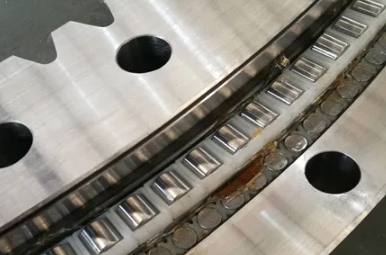Bearings are crucial components in various mechanical applications, serving to reduce friction and enable smooth motion between two or more parts. When it comes to the question of which type of bearing is the most popular, it largely depends on the specific application and the industry in question. However, one prominent contender for this title is the ROTEK bearing. In this article, we will explore the characteristics and applications of ROTEK bearings, shedding light on why they are favored in various fields.
ROTEK bearings, also known as slewing bearings, are specialized components designed for applications that involve heavy loads and rotational movement. These bearings are characterized by their ability to support axial, radial, and moment loads simultaneously. They are commonly used in industries such as construction, renewable energy, and material handling, where the need for high load-bearing capacity and precise rotation is paramount.
One of the key advantages of ROTEK bearings is their versatility. They are available in various designs, including single-row ball, double-row ball, cross roller, and three-row roller configurations. This diversity allows engineers and designers to select the most suitable type of rotek bearing for their specific application. For instance, single-row ball ROTEK bearings are often preferred in applications where space is limited, while three-row roller ROTEK bearings excel in handling heavy radial and axial loads.
ROTEK bearings are renowned for their exceptional load-carrying capacity. Thanks to their robust design and durable materials, they can withstand extreme forces without sacrificing performance. This makes them ideal for applications like wind turbines, cranes, and excavators, where heavy loads and continuous operation are the norm.

In the renewable energy sector, ROTEK bearings play a crucial role in the operation of wind turbines. These bearings support the entire weight of the turbine blades and hub, allowing them to rotate smoothly in the wind. The ability of ROTEK bearings to handle both axial and radial loads is essential in this application, as wind conditions can exert complex forces on the turbine.
The construction industry is another sector that heavily relies on ROTEK bearings. Tower cranes, for example, use these bearings in their slewing mechanisms to lift and position heavy loads with precision. The robustness of ROTEK bearings ensures the safety and stability of these towering structures.
Material handling equipment, such as excavators and cranes, benefits from the versatility and load-bearing capacity of ROTEK bearings. These machines often operate in challenging environments and are subjected to substantial forces. ROTEK bearings contribute to their longevity and efficiency.
In conclusion, while the popularity of bearing types may vary depending on the industry and application, ROTEK bearings have emerged as a preferred choice in many heavy-duty and precision-critical scenarios. Their ability to handle axial, radial, and moment loads, combined with their versatility and robustness, makes them a valuable asset in industries like construction, renewable energy, and material handling. Engineers and designers continue to rely on ROTEK bearings to ensure the smooth and reliable operation of machinery and equipment in demanding environments.